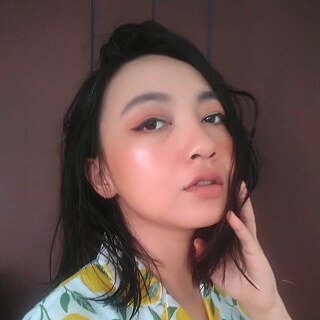Arthouse Cinema - Margarethe von Trotta
Margarethe von Trotta: Women in Cinema

“Feminism is not an invention of the West.” So stated the late Nawal El Saadawi during an interview with Channel 4 News. She added that the struggle of women of different origins, traditions and religions takes place all over the world.
With this thought in mind, I considered the film Die Bleierne Zeit (The Leaden Time), 1981, by Margarethe von Trotta inevitably as a representation of a women’s movement with regional reach and not devoid of an orientalist perspective. This is apparent, for example, in the scene in which Marianne’s husband says he wants to go to Bali to escape his difficulties in Germany. This desire is closely linked to the West’s view of the East. Marianne decides to go to Beirut. In my opinion, the film clearly shows the desire to save people in the Third World. What is the source of this empathy? Does one want to be a rescuer of non-Germans? Or is it something completely different?
The image of women after WWII
Margaretta von Trotta’s cinematic work was awarded the Golden Lion and the Fipresci Prize at the 1981 Venice Film Festival. The core of the story is the relationship between two sisters who, after WWII and the collapse of fascism in Germany, work toward establishing a new image of women in society. Juliane is engaged as a feminist journalist and is committed to the legalization of abortions. Marianne leaves her bourgeois life behind her and joins a leftist terrorist group. Instead of living a perfect life rooted in the ideal image of a family with a husband and children, Marianne opts for political struggle and goes to Beirut, thereby expressing her solidarity with a Third World caught between the fronts of the Cold War.Margarethe von Trotta entered the world of cinema as an actress. She had roles in a series of films by directors of the New German Film, including Götter der Pest (1970), Der amerikanische Soldat (1970) and Warnung vor einer heiligen Nutte (1971) by Rainer Werner Fassbinder. Her career as a director began by collaborating with Volker Schlöndorff. For her part of the collaboration, von Trotta was instrumental in writing the screenplay as well as providing direction for the actors. She made her film debut as solo director of the film Das zweite Erwachen der Christa Klages (1978).
According to feminist thinker Ruby Rich, von Trotta’s film is representative of the corrective realism genre. Among these are her feminist feature films; the film characters are played by established actresses, the plot is comprehensible to the majority of viewers, and well-known cinematographic conventions are used. For Rich, von Trotta succeeded in adapting the tradition of realistic film for feminist purposes. Subsequent films by von Trotta also deal primarily with women’s issues such as contraception, abortion and solidarity among women.
Among von Trotta’s films are those devoted to the ideas of female thinkers, for example Rosa Luxemburg (1986) and Hannah Arendt (2013). Aside from directing her films, she collaborates on the screenplay and works closely with a team that shares her vision.
Laura Mulvey once said that the struggle of women for the right to their bodies cannot be separated from the question of image. How are women portrayed in the media? Why a woman is portrayed as submissive in a film? Is there a female voice in the film? Questions like these triggered a wave of women’s movements in Europe in the 1970s. The question of the image of women also prompted some feminist activists to throw flour bombs during the Miss World event in 1970—they believed such an event only served to turn women into objects. Driven by the urgency to search for a genealogy of female voices in film, the Edinburgh International Film Festival organized a separate screening for films by female directors. In 1973 Laura Mulvey wrote the essay Visual Pleasure and Narrative Cinema published in 1975. Against this regional European background, it is not surprising that von Trotta, as a director, decided to address the problems of white women in her films and to focus on the personal aspects of the characters in the film as well as on the different struggles of the women. The active role of women in filmmaking influences the way women are represented in mass media communication. It’s an incentive to create a new narrative about women.
Exposing media relations as an ideological tool
In the documentary film Nacht und Nebel (1955), director Alain Resnais juxtaposes situations in the Nazi concentration camps in 1955 with film footage shot during the creation of the camps and up to the arrival of the soldiers liberating Nazi prisoners. The narrator in the film Nacht und Nebel explains how the camps were created, what kinds of experiments were performed, how executions were carried out, and ends with mass graves and mangled bodies. It deals with the extraordinary trauma of the Holocaust and invites the viewer to learn from history. In von Trotta’s work, on the other hand, visual material serves as reflection in phases of identity formation. A German woman herself, she examines the ideological decisions of every woman in her film. The visual material in the film has a core function, which in the analysis of the narrative shows a causal connection with sequence and consequence. For example, when Juliane writes about her thoughts on abortion, the camera focuses first on photos that show Hitler with children, and then it shows Juliane’s actions. These two shots follow a sequential pattern showing Juliane’s attempt to deconstruct Hitler’s ideology, the role of the child, and heteronormative relationships. In Marianne's story, on the other hand, the visual material reflects her motivation for political action. The footage of Nacht und Nebel prompts her to adopt an anti-Nazi stance. When she sees documentary footage of starving children in the Third World, she decides to join German left-wing extremists as a white woman who “liberates” oppressed people.Von Trotta’s effort to expose media work as an ideological tool is demonstrated by the story of Juliane and Marianne in view of the audiovisual medium. Through the story of Juliane as a restless woman questioning everything, von Trotta shows that there is a special space created by women for women. Let’s look at a scene in which Marianne is working in the publishing house. It begins with a group of women exchanging personal experiences. They agree that texts about personal stories give readers a sense of connection. By using mass media to tell stories, women can exchange ideas about the situations they have experienced.
From these two remarks about Juliane and Marianne, I learn that the situation after the Holocaust cannot be presented as clearly as it is questioned by Nacht und Nebel. Von Trotta describes the effects of the Holocaust in Germany and makes ideological fragmentations visible. Marianne, for example, was a Nazi supporter in her youth; she founded a family that corresponded to the then prevailing ideal until she decided to join a leftist terrorist group. On the other hand, I learn from Juliane that questions about the image of women, such as those Laura Mulvey addresses, can lead women to fight for the rights associated with their own bodies, including the right to legal abortion.
Author
